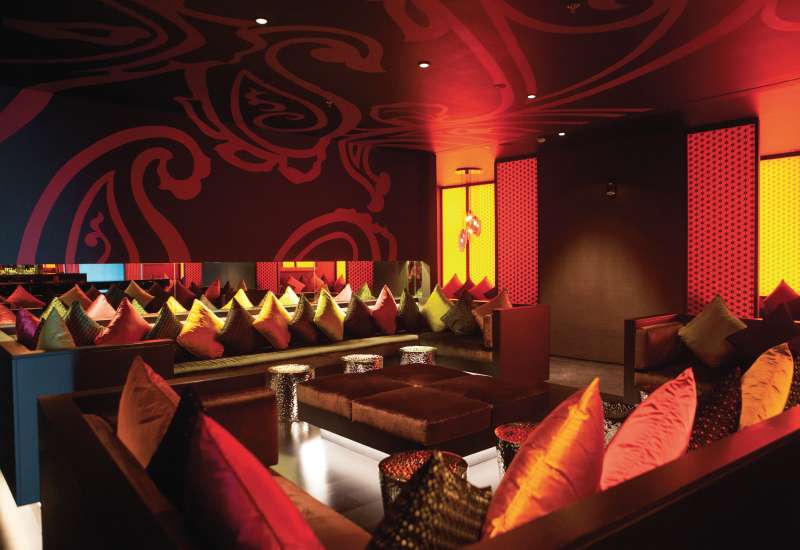What is the supply stream like?
AK: I believe better quality of the produce in Indian definitely lands in the MENA region on a steady basis, due to closer proximity combined with good prices fetched.
SV: In Dubai you get about 90% of the ingredients that you need for Indian cuisine. There are some particular spices, which we found little difficult to source here; those we manage to import from India. The quality differs from place to place. It is up to the chef to decide what quality he wants to go with. We faced a similar situation here, and we tried several suppliers in Dubai for spices until we got the quality we required.
GS: The proximity of the Middle East to India is bliss. India is not far which makes the supply chain very supportive. Given that nearly 45% of the UAE’s population is from the Indian subcontinent, the availability of most ingredients is never a problem and is readily available in the local markets.
There are plenty of suppliers for the spices and special ingredients and the market is also very competitive. North Africa might not be as open as the Middle East in terms of supply chain, but is definitely improving with time.
RG: In terms of the supply of quality authentic Indian produce, it can be challenging as there are a limited number of local suppliers, resulting in having to source some ingredients directly from India.
AS: Due to the region being close to the Indian subcontinent we feel the ingredients supply chain is good; it is continuous and cost-effective. The strong presence of Indians in this region is also one of the reasons for great demand and consistent supply.

| Advertisement |
What challenges to do you face?
RG: One of our biggest challenges is introducing new palettes and flavours to our diners. Many of our guests already have their firm favourites; therefore convincing them of a world beyond the classic chicken tikka masala is something of a challenge.
MS: A challenge is that fancy and stylish types of crockery cannot be found here in the local market hence we are still using the traditional handi and kadai.
AS: Lack of skilled work force and high turnover, which results in inconsistent standards.
SV: We had some challenges in the beginning for sourcing particular spices. There are some traditional spices that are not available in this part of the world. Hence we decided to source them overseas and import directly from suppliers in India.
AK: Being a region with majority part of the population being from India, Indian food is available almost everywhere and highly visible. So the perception of sale price is lower than other cuisines whereas Indian cuisine requires more time, skills, energy and costlier ingredients than most of the popular cuisines in this part of the world. A higher pricing can be expected if you try any other critical path methods like fusion or other adventurous and risky techniques of presenting your food.
GS: Cost wise, it’s never been much of a challenge due to the open market. However, Kuwait is a bit different and the prices fluctuate a lot there. In some case we need exotic spices and to fly them in becomes difficult, as there are not many export houses for such spices.
The best thing about Indian food is that the meats and vegetables can be used from the local market unlike Italian cuisine where you definitely need local tomatoes for the pasta or salads. The only thing Indian food asks for is premium quality spices, good ingredients and excellent skills of the chefs. Finding the right skilled chefs can therefore be challenging.
What does the future look like for Indian cuisine?
AK: Very bright indeed. Indian cuisine is here to stay as the people in the Gulf love it.
SV: Indian cuisine has a bright future here, as most locals and visitors love to try Indian food. We have only seen the beginning of a local trend.
GS: There is a definite bright future for Indian cuisine in this region; it has been seen that more and more companies who are investing in the restaurant business are either running successful Indian concepts or trying to build one.
AS: I believe it is mainly the north Indian cuisine which is most popular in this region, there is lot more to explore. Modes of public dining are undergoing rapid changes in India: more visible trends like pan Indian cuisine, cooking inspired by Ayurveda focused on health and nutrition and ethnic cooking are more in demand. These things are not yet experienced by this part of the world, so I believe the Indian cuisine has a long way to go in this region.
MS: I believe that Indian cuisine plays an important role and may even more dominate in all parts of the region in the future. Although there are other cuisines, Indian food will be always a necessity in the menus of restaurants and outlets, and included in most of the international food selections.
RG: The future of Indian food is at its brightest point ever with Indian cuisine coming a long way in establishing itself on the global dining scene. Indian restaurants in New York, London, and around the globe are being graded on par with some of the best French, Italian, and American restaurants on offer. Indian restaurants, serving authentic cuisine or fusion are becoming hautè.
Article continues on next page ...









 Search our database of more than 2,700 industry companies
Search our database of more than 2,700 industry companies









